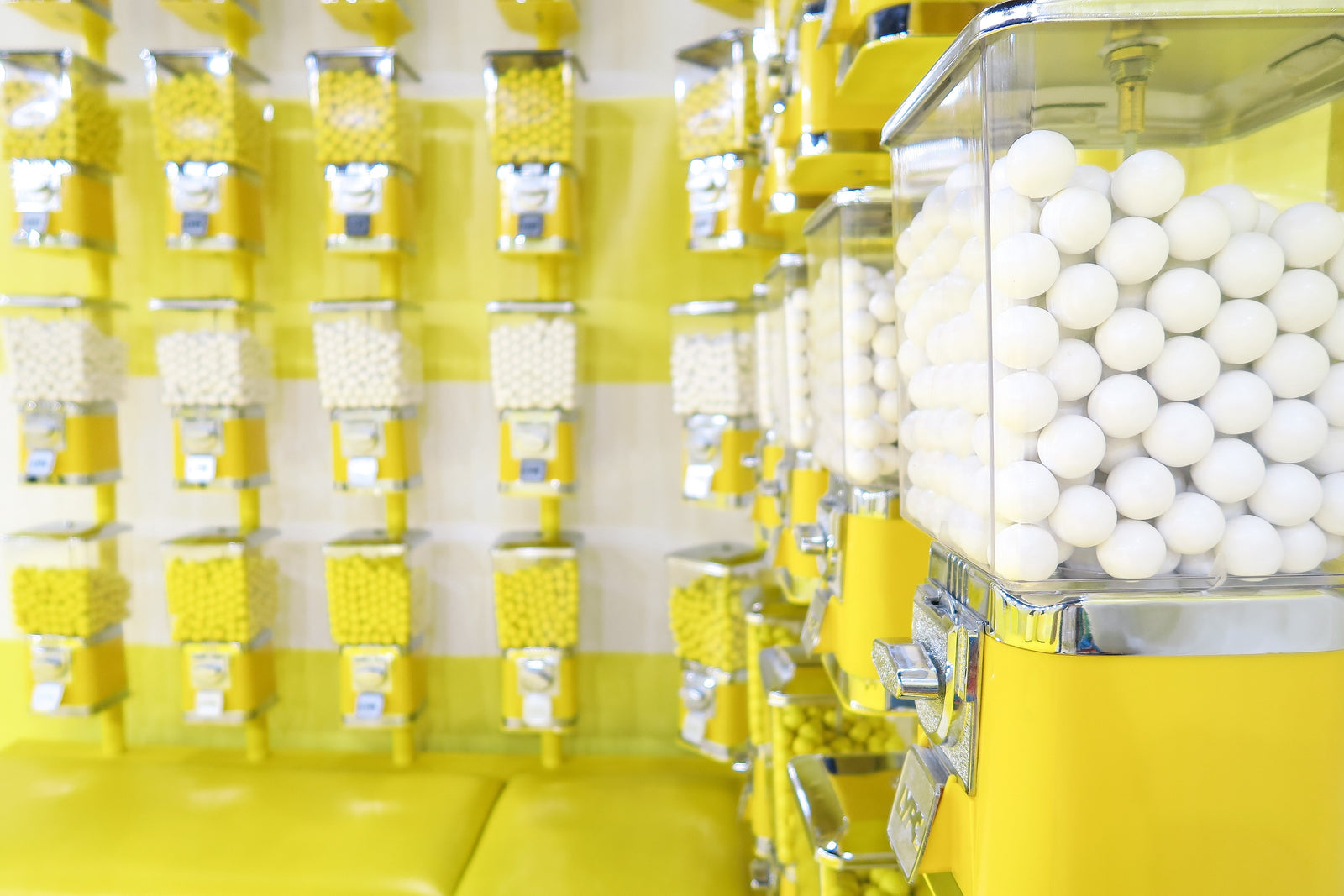🚚 FREE USA SHIPPING ON ORDERS OVER $30! INTERNATIONAL SHIPPING AVAILABLE.
🚚 FREE USA SHIPPING ON ORDERS OVER $30! INTERNATIONAL SHIPPING AVAILABLE.
The benefits of coffee - over 1,000 compounds!
by Mark Miller 4 min read

Adding milk and sugar to coffee can change the chemistry of coffee. The world’s favorite psychoactive substance has more than 1,000 chemicals. (Wikimedia Commons/Photo by 4028mdk09)
What is the chemistry of coffee? Caffeine is the most famous chemical compound in coffee, but roasted coffee beans contain more than 1,000 other compounds. Some of these chemicals are noxious but still are not unhealthy because they are present in such low amounts.
You never hear anybody wake up and say, “I need a big dose of putrescine and dimethyl disulfide in my morning cup.” As Business Insider reports [1], these chemicals are present in decaying flesh (putrescine) and human feces (dimethyl disulfide) and give them their distinct odor.
If this grosses you out, don’t worry, these compounds are present in such tiny amounts that they won’t ruin your morning cuppa with noxious odors and flavors.
So many benefits to coffee
Of course caffeine is the most famous chemical in coffee, and it is beneficial in many ways. Research on coffee has shown that it:
- Reduces risk of heart disease, cancer and multiple sclerosis
- Boosts semen production
- Invigorates
- Enhances memory
- Alleviates fatigue
- Reduces the risk of kidney stones
- Helps alleviate migraine headaches
- Enhances the effect of over-the-counter painkillers
- Enhances athletic performance
Caffeine also can enhance memory and concentration, keep you alert, alleviate fatigue and sleep deprivation.
This doctor says your IQ goes up and you have less chance of getting Alzheimer's if you take caffeine regularly.
And, according to CaffeineInformer [2], it reduces the risk of type 2 diabetes. It also may prevent erectile dysfunction and reduce the risk of suicide.
As our blog pointed out [3], caffeine can boost athletic stamina and speed so much that the International Olympic Committee once limited how much of it Olympic athletes could take. Caffeine was categorized as a performance-enhancing substance.
The chemistry of coffee
What are some of these other mysterious chemicals in coffee? Two compounds that may raise cholesterol, specifically bad LDL cholesterol, are present as oily droplets or in grounds, says a Harvard Health Letter article [4].
They are cafestol and kawheol, oily chemicals of a type called diterpenes. Paper filters catch most of these chemicals, but certain types of coffee preparation that don’t use filters leave them in the beverage.

Flowers on a robusta coffee plant; the complex chemistry of coffee includes beneficial compounds and some others that would be detrimental if they were present in higher concentrations. (Wikimedia Commons/Okkisafire photo)
Harvard reports: “There is a twist to this aspect of the coffee story, because cafestol and kahweol may also have some health benefits that are lost when they’re filtered out. The research is in the preliminary stages, but cafestol and kahweol could have some anticancer effects and be good for the liver.”
Coffee chemistry
There are so many chemical compounds in coffee that various websites report on different ones.
Other antioxidant chemicals, including chlorogenic acid, may help prevent heart disease and diabetes, and inhibit the body’s absorption of glucose in the digestive tract and even out the level of insulin, Harvard reports.
“Chlorogenic acid might be another coffee ingredient with a split personality. Along with caffeine, it seems to push up levels of homocysteine, an amino acid that has been associated with artery-clogging atherosclerosis,” Harvard says the article.
Business Insider [5], The Royal Society of Chemistry [6] and BodyAndSoul.au [7] report on some major chemical compounds and even heavy metals in coffee, including:
- Water, of course. After brewing, good coffee is 98.75 percent water and 1.25 percent plant matter that is dissolved.
- Caffeine, an alkaloid plant toxin that fends off insect parasites on the tree, as nicotine and cocaine also do. It is a stimulant to people because it blocks neuroreceptors for adenosine, a chemical that makes us sleepy. When caffeine blocks adenosine it keeps people awake.
- 2-Ethylphenol, a chemical that has a medicinal smell to it. When rats get too much of it, they stagger around drunkenly.
- Quinic acid, which causes what Business Insider calls a “’sour coffee’ burn in the pit of your stomach.”
- 3,5 Dicaffeoylquinic acid, which may give some antioxidant protection from the damage that free radicals do to a body.
- Trigonelline, which is niacin that includes a methyl group. This substance breaks down into the pyridines that may prevent tooth decay and also gives coffee an earthy, sweet taste.
- Niacin, which forms after the beverage reaches 160 degrees and breaks down trigonelline. You can obtain half the recommended daily allowance of B3 from two or three cups of espresso.
- Theophylline, a cousin of caffeine that is also a mild stimulant and muscle relaxer. It can relieve symptoms in people suffering from bronchitis, asthma and emphysema. It also can cause problems if it reacts with newer antibiotics.
- Acrylamide, a suspected carcinogen that can’t be removed from coffee without sacrificing the flavor.
- Another carcinogen in coffee, 4-methylimidazole, is a minor component but still one scientists are concerned about.
- Furan, another cancer-causing agent.
- Heavy metals of mercury, cadmium and lead—toxic all.
If you're interested in an in-depth look at coffee's chemical content, you can read the article
‘The juice of death’
Business Insider introduces its article by writing:
This is what you just put in your mug: Cocaine-like brain chemicals and the juice of death.
The article is from a chapter in the book THIS IS WHAT YOU JUST PUT IN YOUR MOUTH? [8] by Patrick Di Justo.
Sounds kind of grim, doesn’t it? But the chapter does point to some positive effects of coffee’s many chemicals.
The Harvard Medical Letter says coffee is good for us, but researchers on coffee’s benefits haven’t reached the conclusion that coffee should be a recommended health drink.
The letter states that so many favorable studies and such healthy ingredients mean good news for those who drink coffee. Harvard advises people to enjoy their cups of coffee in moderation.
Of course if you’re turned off by the (undetectable) presence of the odor of feces and decay, you can try Viter Energy Mints [9], which contain none of those noxious chemicals and some very helpful ones, including caffeine, niacin, vitamin B6, folic acid, and vitamin B12.
Sources:
[1] http://www.businessinsider.com/chemicals-in-coffee-2015-3
[2] https://www.caffeineinformer.com/top-10-caffeine-health-benefits
[3] https://www.goviter.com/blogs/viter-energy-blog/the-majority-of-athletes-use-caffeine
[4] https://www.health.harvard.edu/staying-healthy/what-is-it-about-coffee
[5] https://www.businessinsider.com/chemicals-in-coffee-2015-3
[6] https://www.chemistryworld.com/features/chemistry-in-every-cup/3004537.article
Also in Viter Energy Blog

Can caffeine help with ED?
by Mark Miller 3 min read
Erectile dysfunction. In combination, those are two of the ugliest words known to man. But can caffeine help you get it up?
Science hasn't found the definitive answer to this question, but one study concluded that fewer men who consume caffeine have problems performing. The study said:
Caffeine intake reduced the odds of prevalent ED, especially an intake equivalent to approximately 2-3 daily cups of coffee (170-375 mg/day). This reduction was also observed among overweight/obese and hypertensive, but not among diabetic men. Yet, these associations are warranted to be investigated in prospective studies

Caffeine while breastfeeding? Go ahead, it's OK
by Mark Miller 4 min read
Many breastfeeding mothers wonder if it's OK to take caffeine. In fact, many nursing mothers just avoid caffeine in case it would keep their babies fussy, jittery and awake.
The answer is yes, you can take caffeine while breastfeeding, as long as you don't go over about 300 mg a day.
It's an important question because caffeine is in so many products, and taking coffee, tea, or soda is such a common ritual.
And breastfeeding mothers may be tempted to take caffeinated products because they are deprived of sleep by their newborns' odd sleep schedule.

The surprising benefits of chewing gum
by Mark Miller 5 min read
You might think gum chewing is an activity with little or no benefits besides the pleasure and flavor, but think again. Chewing gum has several benefits.
In addition to freshening your breath, sugar-free gum can help prevent cavities and contribute to overall oral health. But that's just the beginning.

